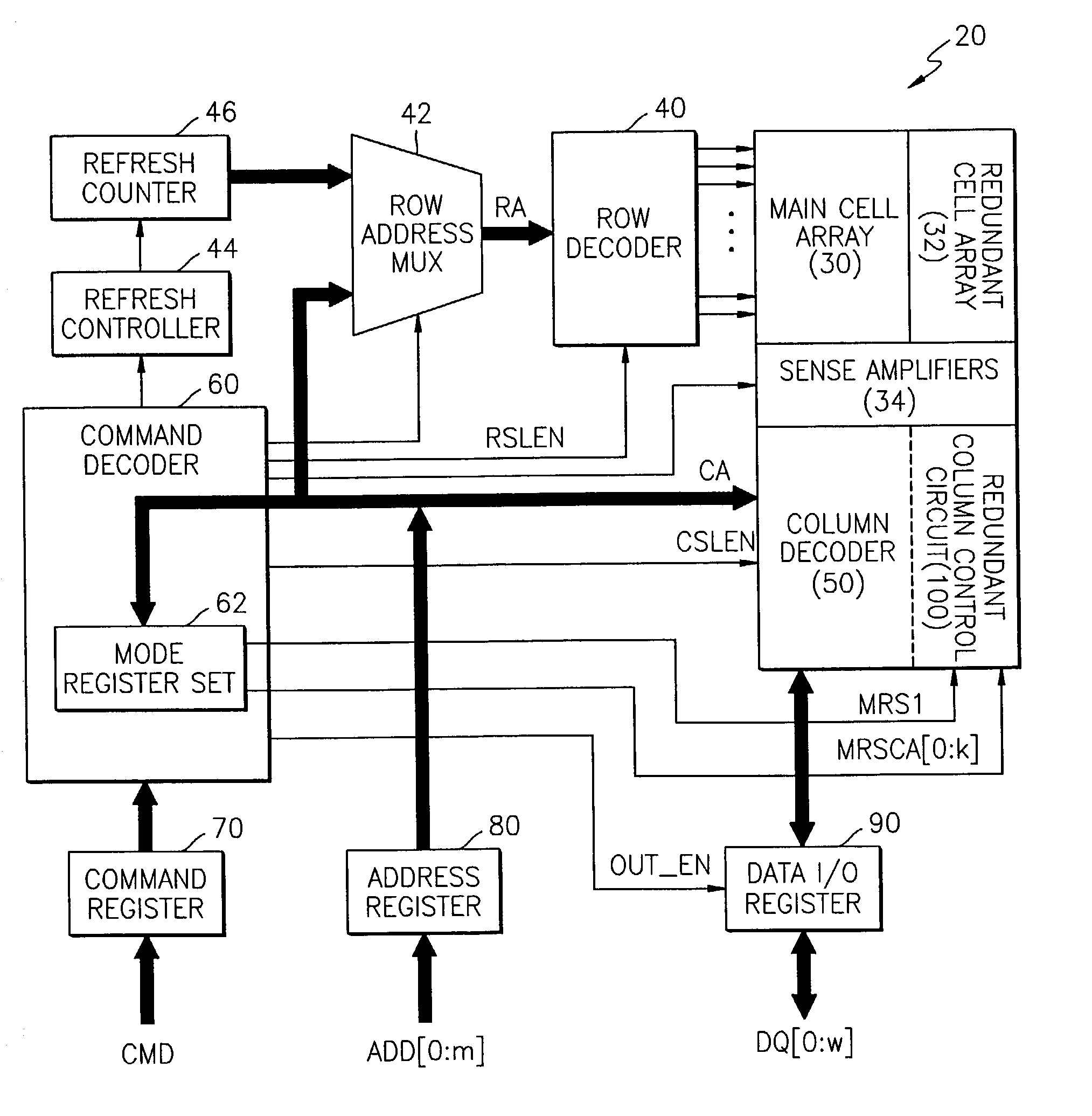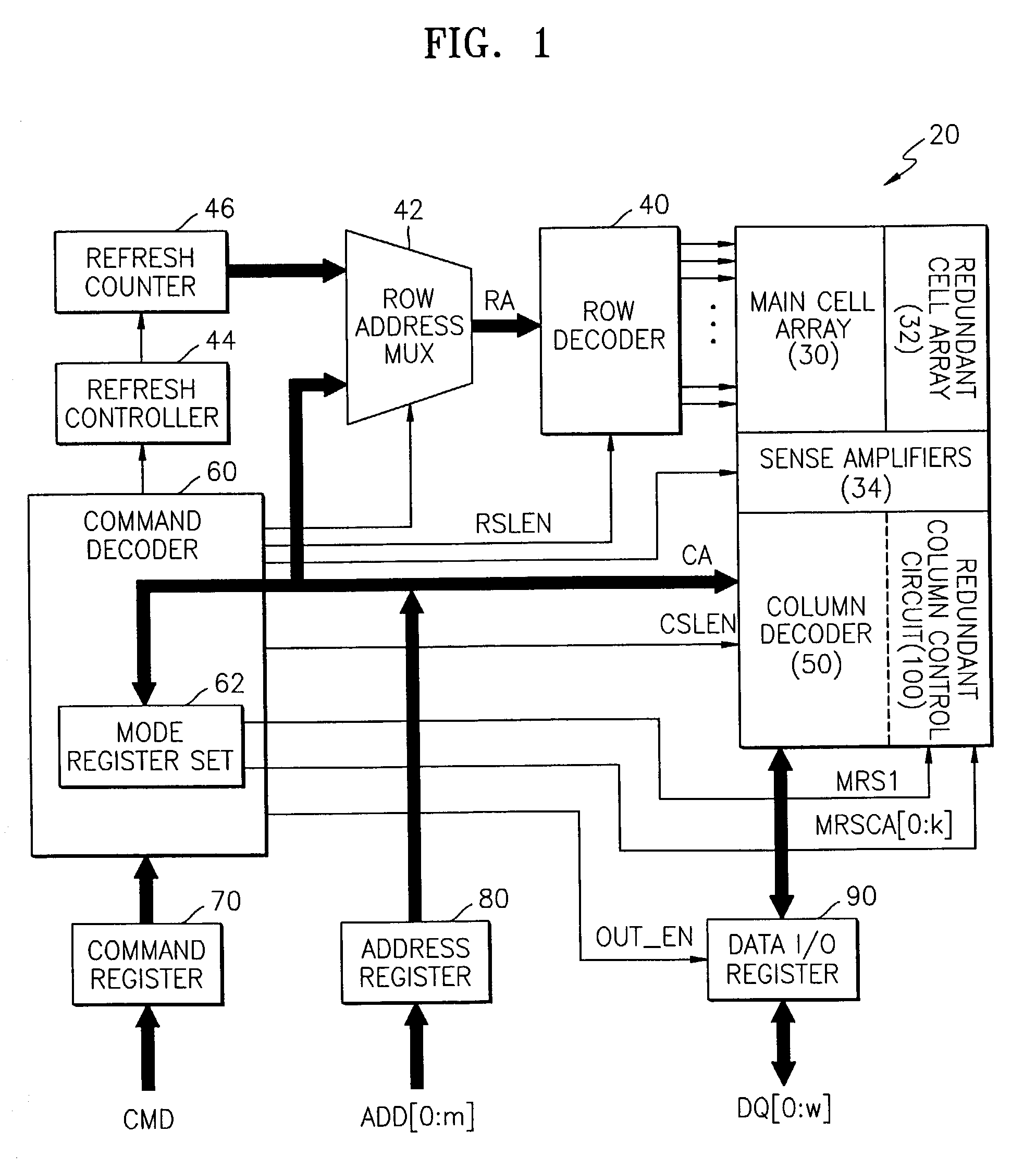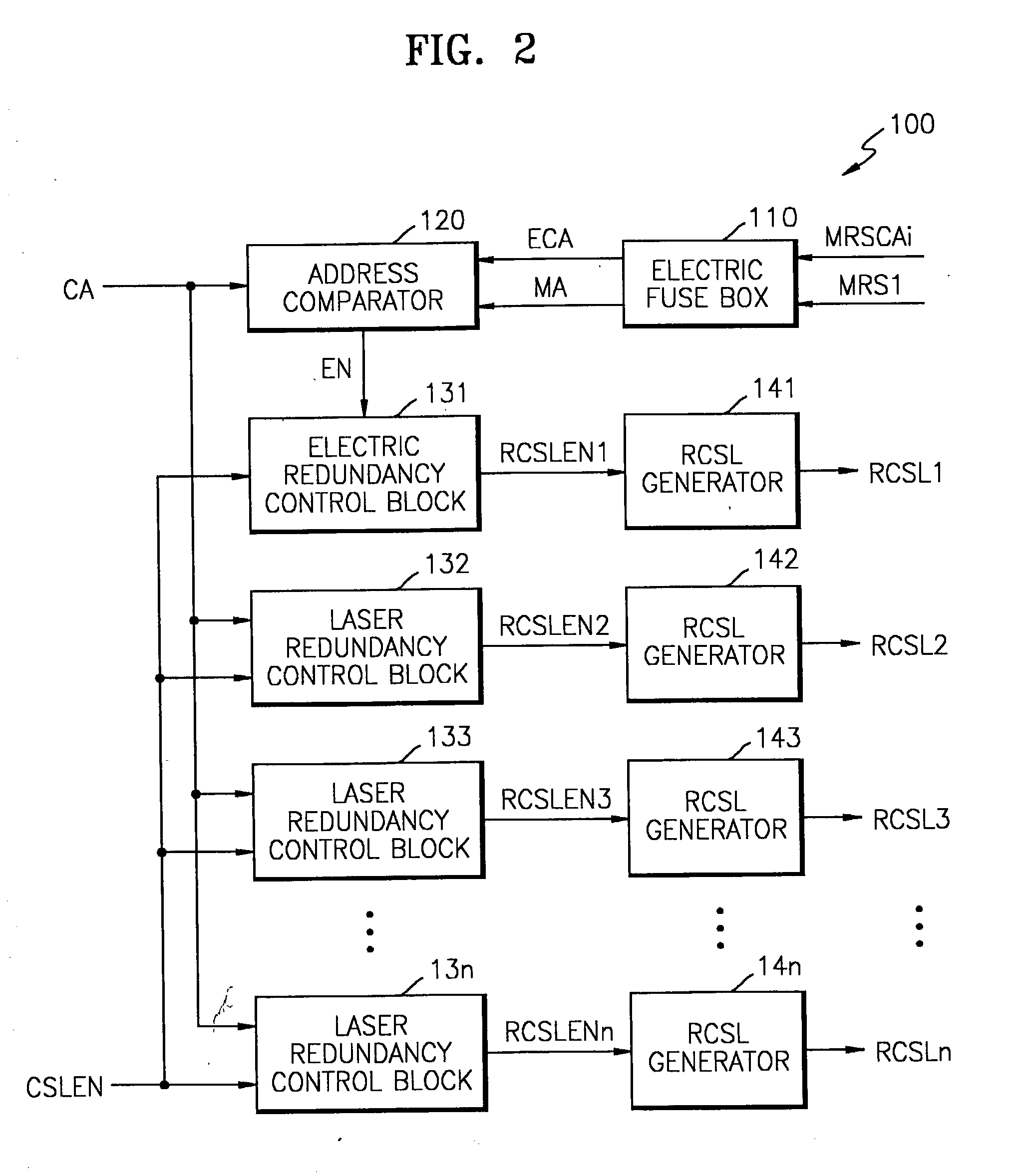Semiconductor memory device post-repair circuit and method
a memory device and memory chip technology, applied in the field of post-repair structures and methods, can solve the problems of many--even the most--main memory cell arrays on a given wafer may fail to achieve 100% operability, defects may arise, first become apparent,
- Summary
- Abstract
- Description
- Claims
- Application Information
AI Technical Summary
Problems solved by technology
Method used
Image
Examples
first embodiment
[0030] FIG. 1 illustrates a block diagram for a semiconductor memory device 20--in this case a synchronous DRAM (SDRAM)--according to a Briefly, a main cell array 30 and redundant column cell array 32 are served by row and column circuitry. The column circuitry comprises sense amplifiers 34 and column decoder 50. Column decoder 50 selects, for each column address CA, the column (bit) line(s) that will be read / written to. Within column decoder 50, redundant memory line control circuit 100 determines when a redundant column will be substituted for a main column, based on column address CA and column select enable CSLEN.
[0031] The row circuitry comprises row decoder 40 and row address multiplexer 42. Row decoder 40 selects, for each row address RA, which row (word) line will be activated. Row select enable RSLEN indicates when RA is valid. Although no redundant row lines and circuitry are shown in device 20, such may exist and would be similar to redundant array 32 and control circuit...
second embodiment
[0052] One condition that the embodiment of FIG. 2 cannot correct for is a failure in the redundant column associated with the electric redundancy control block 131. Were this redundant column to be defective, post repair would be impossible, even if one or more of redundant columns 2 through n were defect-free and unused. In contrast, the second embodiment increases the likelihood that post repair will be possible, by allowing the potential selection of one of several redundant columns for association with electrical redundancy control signals. Preferably, then, a defect-free redundant column can be allocated to post-repair after wafer fabrication. And also preferably, each defect-free redundant column can be, in the alternative, allocated to laser repair.
[0053] FIG. 7 illustrates redundant column control circuit 200 of the second embodiment. Although similar to FIG. 2 in some ways, FIG. 7 contains post-repair control blocks 251 to 25n, different redundancy control blocks 231 to 23...
embodiment 900
[0083] Although the preceding embodiments have illustrated circuits that allow a single post-repair operation, the invention is not so limited. For instance, FIG. 14 contains a block diagram for a repair circuit embodiment 900 capable of performing two post-repair operations. Repair circuit 900 has redundancy control blocks 931 through 93n, RCSL generators 941 through 94n, and post-repair control blocks 951 through 95n, similar to the post-repair circuit 200 shown in FIG. 7. However, repair circuit 900 has two electric fuse boxes 911 and 912 and two address comparators 921 and 922, unlike the post-repair circuit 200.
[0084] The two electric fuse units, 911 and 912, are separately programmable through mode register set signals MRS1 and MRSCAi. Note that one mode register set signal can be used by the electric fuse units to gate the remaining mode register set signals, such that each electric fuse unit can be programmed independently.
[0085] Fuse unit 911 generates a first electric colu...
PUM
 Login to View More
Login to View More Abstract
Description
Claims
Application Information
 Login to View More
Login to View More - R&D
- Intellectual Property
- Life Sciences
- Materials
- Tech Scout
- Unparalleled Data Quality
- Higher Quality Content
- 60% Fewer Hallucinations
Browse by: Latest US Patents, China's latest patents, Technical Efficacy Thesaurus, Application Domain, Technology Topic, Popular Technical Reports.
© 2025 PatSnap. All rights reserved.Legal|Privacy policy|Modern Slavery Act Transparency Statement|Sitemap|About US| Contact US: help@patsnap.com



